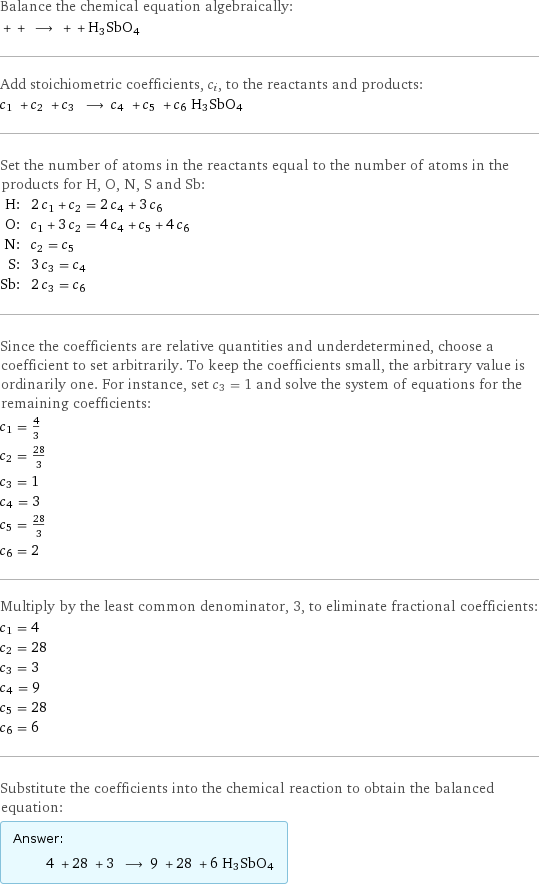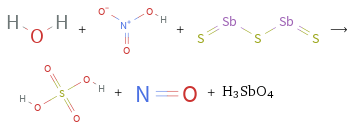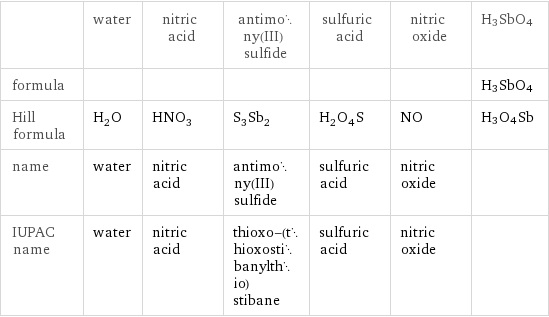Input interpretation

water + nitric acid + antimony(III) sulfide ⟶ sulfuric acid + nitric oxide + H3SbO4
Balanced equation

Balance the chemical equation algebraically: + + ⟶ + + H3SbO4 Add stoichiometric coefficients, c_i, to the reactants and products: c_1 + c_2 + c_3 ⟶ c_4 + c_5 + c_6 H3SbO4 Set the number of atoms in the reactants equal to the number of atoms in the products for H, O, N, S and Sb: H: | 2 c_1 + c_2 = 2 c_4 + 3 c_6 O: | c_1 + 3 c_2 = 4 c_4 + c_5 + 4 c_6 N: | c_2 = c_5 S: | 3 c_3 = c_4 Sb: | 2 c_3 = c_6 Since the coefficients are relative quantities and underdetermined, choose a coefficient to set arbitrarily. To keep the coefficients small, the arbitrary value is ordinarily one. For instance, set c_3 = 1 and solve the system of equations for the remaining coefficients: c_1 = 4/3 c_2 = 28/3 c_3 = 1 c_4 = 3 c_5 = 28/3 c_6 = 2 Multiply by the least common denominator, 3, to eliminate fractional coefficients: c_1 = 4 c_2 = 28 c_3 = 3 c_4 = 9 c_5 = 28 c_6 = 6 Substitute the coefficients into the chemical reaction to obtain the balanced equation: Answer: | | 4 + 28 + 3 ⟶ 9 + 28 + 6 H3SbO4
Structures

+ + ⟶ + + H3SbO4
Names

water + nitric acid + antimony(III) sulfide ⟶ sulfuric acid + nitric oxide + H3SbO4
Chemical names and formulas

| water | nitric acid | antimony(III) sulfide | sulfuric acid | nitric oxide | H3SbO4 formula | | | | | | H3SbO4 Hill formula | H_2O | HNO_3 | S_3Sb_2 | H_2O_4S | NO | H3O4Sb name | water | nitric acid | antimony(III) sulfide | sulfuric acid | nitric oxide | IUPAC name | water | nitric acid | thioxo-(thioxostibanylthio)stibane | sulfuric acid | nitric oxide |